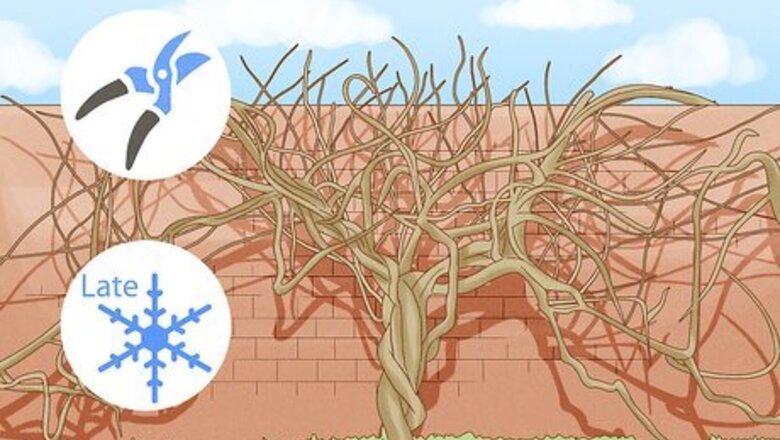
views
Pruning in Winter

Plan your wisteria’s first pruning of the year around late winter. This is the best time to prune your wisteria because the leaves and flowers have not grown back yet after falling off during the fall. This means that the branches are bare and easier to reach. If you are hard pruning an old, neglected wisteria, don't do everything all at once. Space the process out over the span of a few years.
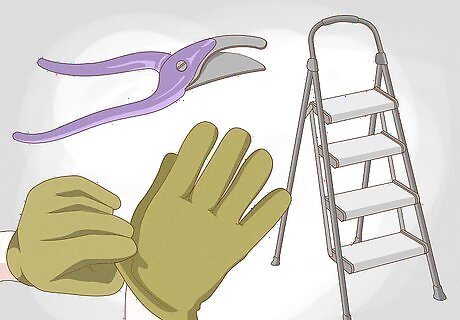
Get a pair of hand pruners, gloves, and a step ladder. You will need the hand pruners to do the actual pruning, and a step ladder to reach the vines. A pair of gloves will help protect your hands against scratches. If you are hard pruning an old, neglected wisteria, switch to a pair of loppers or a pruning saw.
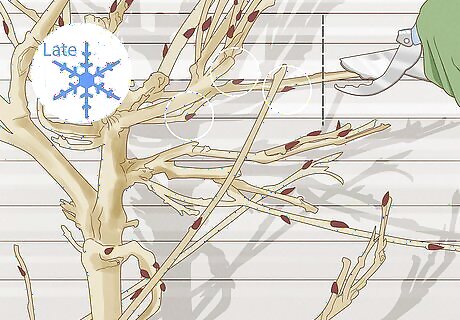
Cut the long shoots down until they have 2 to 3 buds each. This will help tidy the vine up and ensure that the blooms get enough sunlight. Make sure that you prune wisteria to 2 to 3 buds on the inner side of the shoot. You do not need to leave any buds on the outside of the shoot. The inner side of the shoot is the side that is facing away from you. The outer side of the shoot is the side that is facing you. Be sure to cut off the whip-like water shoots as well. The only things you want left on the vine are the flower buds. If you are hard pruning an old, neglected wisteria, focus on the old, hard branches. Cut them back to where a new shoot begins.
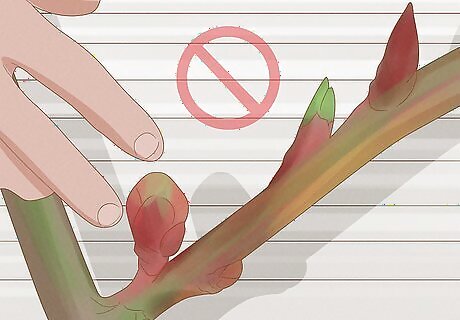
Be careful not to bump the flower buds. The flower buds are very fragile, and if you accidentally bump against them, they may fall off. If these buds fall off, then your wisteria will have fewer blooms.

Decide whether you want to tie or trim the thin shoots. The vine will have developed lots of thin shoots during summer. If you want to train the vine to cover more area on your wall or pergola, you will have to tie the vines into place with wire. If the shoots are all tangled up, it would be better to cut them down to 1 inch (2.5 cm) instead. To tie the shoots, hold them against your desired support, then loosely wrap a piece of thin wire around both the vine and the support. Twist the wire together, then trim the excess wire off. Cutting the thin shoots down will help encourage bigger blooms the following year.
Pruning in Summer
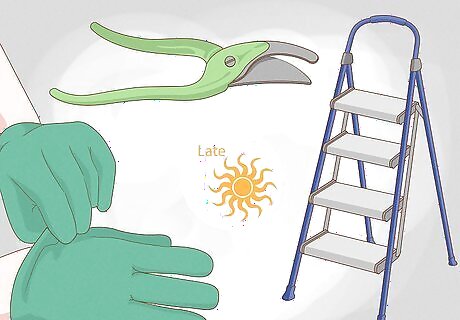
Get out your tools and prepare to prune again in late summer. As soon as the wisteria is done flowering, it is time to get out your tools again. This includes your hand pruners, ladder, and gloves. If you are doing hard pruning on an old wisteria, get out the loppers or pruning saw.
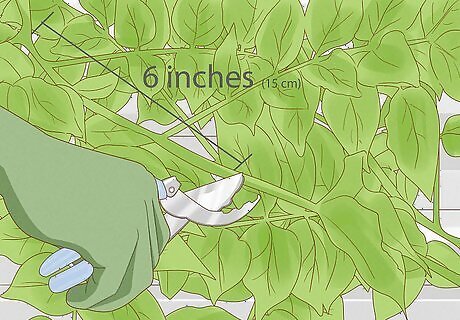
Cut the shoots down to 6 inches (15 cm) each. This will help tame the vine, and encourage it to produce more blooms the following year. Try to leave 5 to 6 leaves on each shoot. This way, you will have enough leaves left behind for a visually-appealing appearance, but not so many leaves that the vine wastes energy on them.
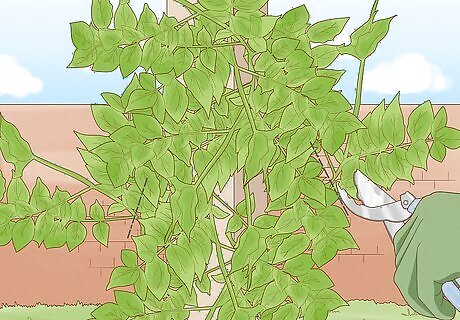
Trim away shoots that aren't necessary for the vine’s support. Wisteria is a vine, which means that it grows on a pergola or wire support. Some of the shoots help keep the vine attached to the pergola or wire support. Other shoots stick out randomly and lead to an unruly appearance. It is these shoots that you should cut away. It would be a good idea to cut back any root suckers as well, especially for grafted vines. Root suckers are thin vines or branches without any flowers or leaves on them.

Trim the new growth back every 2 weeks until summer is over. This will help maintain a tidy appearance and encourage more blooms. How far you trim depends on how long and unruly the shoots get. About 1 to 2 leaf joints would be ideal, however.
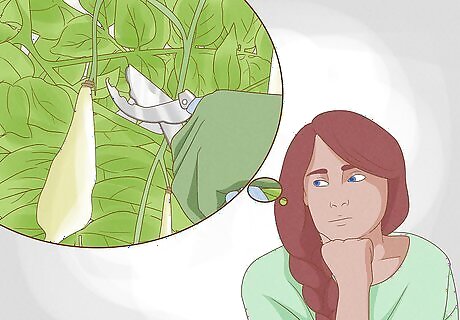
Decide whether or not you want to leave the seedpods on. Some people like the way the seedpods look, while others prefer to cut them away. If you decide to leave the seedpods on, be aware that they will burst once temperatures rise.




















Comments
0 comment